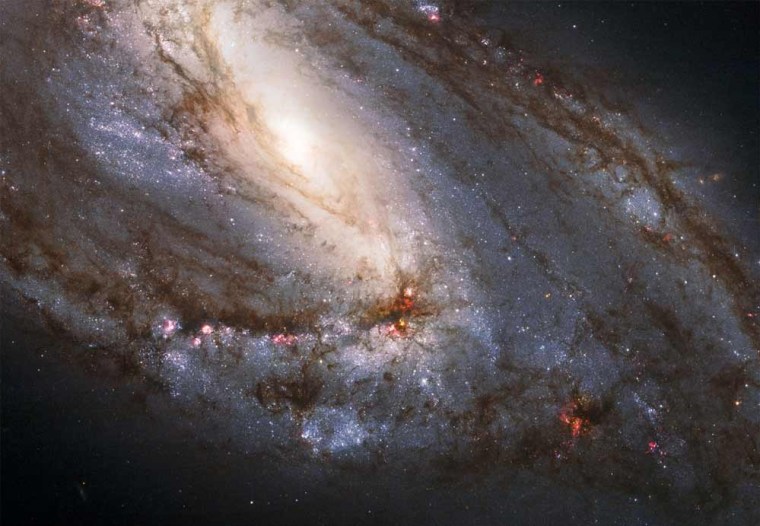Hubble has snapped an amazing new photo of a peculiar galaxy caught in the middle of two other galaxies that appear to be stretching it out.
The oddball spiral galaxy, called Messier 66, is one-third of the Leo Triplet, a group of three interacting galaxies about 35 million light-years from Earth (a light-year is the distance light can cover in a year). Messier 66 is larger than its fellows, but it appears that they are having a strong effect on the central galaxy.
The spiral arms on Messier 66 look out-of-whack. Most spiral galaxies have symmetrical arms where thickets of gas, dust and newly born stars twist around the galaxy's center. But in Messier 66 the arms are asymmetrical and climb above the galaxy's main disc. Even the dense cluster of material at the center, called the nucleus, appears to be displaced.
Researchers think these effects were caused by the gravitational tugging of the galaxy's neighbors, Messier 65 and NGC 3628, which have distorted Messier 66 over time.
The new photo was taken by the Hubble Space Telescope's Advanced Camera for Surveys. It reveals fine detail along the galaxy's spiral arms, including clusters of bright stars that are visible in the picture's blue and pink regions. These clusters can tell astronomers a lot about how the galaxy evolved over time.
The nearly 20-year old Hubble observatory has been snapping iconic photos of the universe since it was launched in April 1990. Over the years it has been visited by astronauts multiple times for repairs and upgrades, including during a recent space shuttle mission in May 2009. That trip left the telescope in good shape to keep running for at least five more years.
